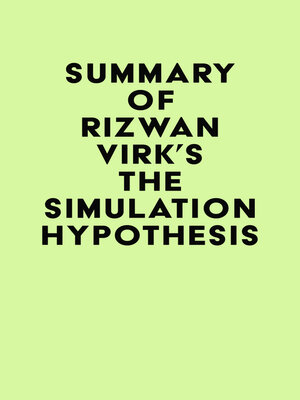
Sign up to save your library
With an OverDrive account, you can save your favorite libraries for at-a-glance information about availability. Find out more about OverDrive accounts.
Find this title in Libby, the library reading app by OverDrive.



Search for a digital library with this title
Title found at these libraries:
| Loading... |
Please note: This is a companion version & not the original book. Book Preview:
#1 The Simulation Argument states that if video game technology continues its rapid pace of improvement, we will be able to create hyper-realistic simulations that are indistinguishable from physical reality. This would be the point in a technological civilization's development when it possesses the ability to create hyper-realistic simulations.
#2 In this part of the book, we will examine whether and how it would be technologically possible for us to construct a simulation that is as all-encompassing as the one in The Matrix. We'll start with the history of video game technology from the first video games of the 1960s and 1970s to today's more sophisticated MMORPGs.
#3 The development of video game technology can be broken down into four stages: Stage 0 through Stage 3, from the days of single-player video games to today's highly sophisticated multiplayer 3D games rendered online.
#4 The first text adventure game was Colossal Cave Adventure, built by Will Crowther in 1976 on a PDP-10 mainframe computer. It was based on the Mammoth Caves in Kentucky, where Crowther had spent a lot of time.






